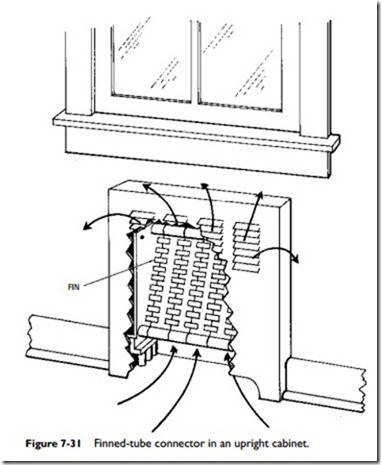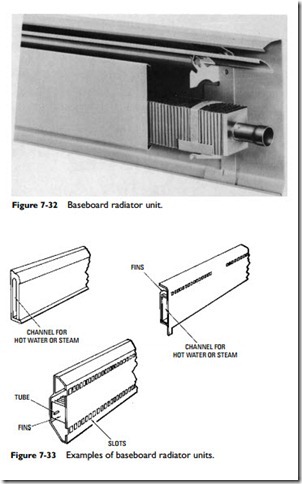Air Conditioning
For many years hydronic heating systems were installed without any provision for air conditioning. Two important reasons for not including cooling systems were:
• The location of the floor-mounted radiators and baseboard convectors would cause the heavier cold air to collect along the floor.
• It was impossible to capture and remove the condensation that forms when chilled water circulates through pipes /tubing embedded in floors, ceilings, or walls; or through baseboard convectors and radiators.
Until very recently these two technical problems have placed hydronic heating systems at a disadvantage when competing with the forced-warm-air systems. Consequently, hydronic systems have been limited to a much smaller share of the residential heating and cooling market. As homeowners have become more energy conscious and houses more tightly sealed against air infiltration, central air conditioning has become a necessity for houses heated by hot-water/hydronic heating systems. The methods used to add air
conditioning to hot-water/hydronic heating systems are covered in Chapter 10, “Central Air Conditioning” in Volume 3.
Moisture Control
A hot-water heating system will generally maintain an adequate humidity level without the additional assistance of a separate humidifying unit. The humidifier illustrated in Figure 7-35 is an example of the type that could be used in a hydronic heating system should one be required. It is designed with a hot-water coil on the air inlet side of the unit. The heated boiler water circulates through this coil. A blower in the unit draws filtered room air over the coil and through a wetted rotating pad. The moist air is then circulated through the rooms by the blower. The humidifier is controlled by a room humidistat.


